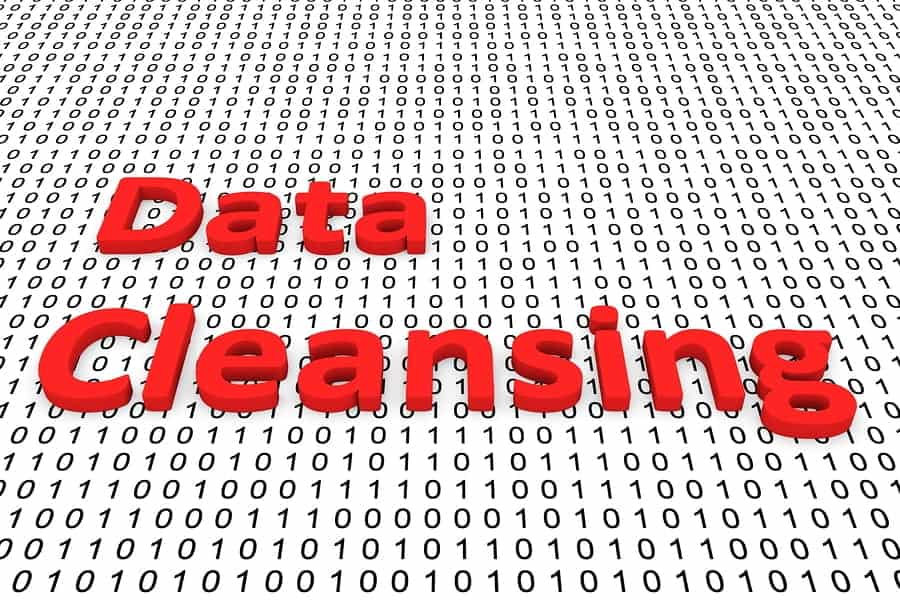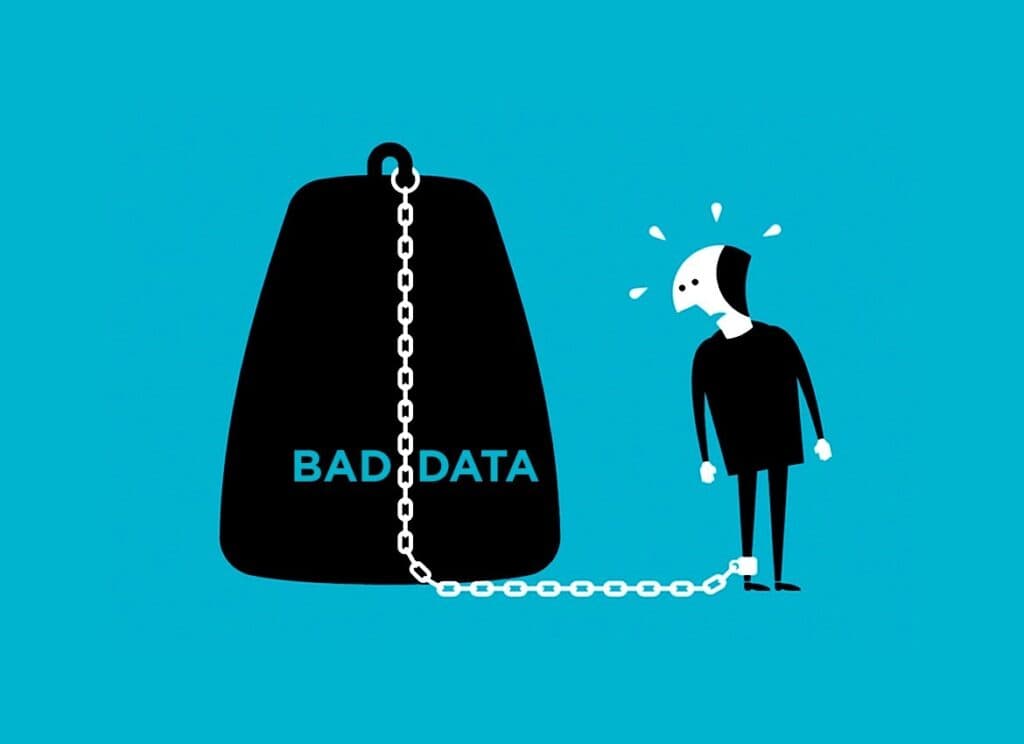With more data available to companies than ever before, we are seeing a change in how companies operate. A new goal of becoming a data-driven company is prevalent. And rightfully so. Businesses are investing millions of dollars in cloud systems and technologies, hardware infrastructure, and software solutions to capture data and derive key insights from it. However, the insights are only as good as the data analyzed. Bad data is a real problem. Businesses aren’t aware of the impact it has. This piece will help shine a light on why it is harmful to your business, and what you can do about it. Let’s dive in.
Table of Contents
ToggleWhat is Bad Data?
Essentially, it is any data that is unstructured and suffers from quality issues such as inaccurate, incomplete, inconsistent, and duplicated information. Bad data, unfortunately, is an inherent characteristic of data that is collected in its raw form. For example, social media data is often unstructured data that needs to be processed before it can be used for analysis or business intelligence.
Most data suffers from problems like:
- Misspelled names and address information
- Fake or invalidated address
- Missing phone numbers
- Information that does not follow a consistent format
- Fields that have accidental use of punctuation, bullet icons, etc.
All these problems though seemingly inconsequential, are the leading cause of bad data and become a severe bottleneck when this data needs to be migrated into a business intelligence platform or when it has to be used for analytics.
The causes of it vary – human entry error, deliberate use of confusing information, poor data collection methods are just some of the most common reasons for bad data. Furthermore, companies that store data in disparate data sources tend to have more problems with data duplication. In many cases, raw data is inherently bad and requires a significant amount of time and effort in cleaning up.

5 Ways It Harms Your Business
Should companies spend time fixing minor problems like spellings and typos? Yes, It matters, and it harms your business in a wide variety of ways. Here are 7 major ways it affects your business.
- It creates flawed insights: Duplicated data, for example, is one of the leading causes of flawed insights. A company would assume it has 100 active users, but due to duplicate data that happens over multiple data sources, it’s quite possible that the company only has 63 active users while the remaining 37 are duplicates! Consider this example at an exponentially large level with millions of rows of data, and you’re very likely to draw inaccurate conclusions from the data.
- It causes failed migration projects: When your company is moving from one platform to another, the chances are that the new platform has stricter data governance and standardization rules in place. Furthermore, the new system may have a completely different data storing format. If this is the case, your team will face a hard time moving and mapping data accurately. Before a migration process, data must be treated to remove any inconsistencies.
- It affects organizational efficiency: Organizations today operate with data at its core. Poor data directly impacts organizational efficiency. Your company’s processes, its people, and its goals are all affected when data is not accurate. For example, a marketing team may end up making a costly mistake by sending emails to the wrong target audience – something they could have prevented had they had access to clean data. Data is the lifeline of every organization today -when the quality can’t be trusted and resulting actions are erroneous, it could have serious outcomes.
- It is a bottleneck in digital transformation: Because poor data quality affects processes, cultures, and people, it eventually affects digital transformation goals too. When bottlenecks arise, companies have to halt a transformation project to fix a data quality problem. This alone takes months of effort, delaying the transformation and keeping companies in limbo.
- It results in costly expenses: Gartner’s 2017 Data Quality Market Survey revealed that poor data quality is costing organizations up to $15 million on average. This number has likely doubled over the years, especially since companies have been aggressively increasing data collection and analysis over the last 2 years.
Apart from these major problems, poor data quality is the reason behind a dozen other minor issues that are usually ignored by business leaders until it becomes a major bottleneck for companies to deal with.
What are the Ways with Which You Can Manage Data That Isn’t Good?
Companies usually have a knee-jerk reaction to bad data when they discover it. They go on a hiring spree, hoping that data analysts can wave a magic wand, magically fixing errors. Unfortunately, that’s not how it works.
A data analyst’s job is not to clean data but to derive key insights from data. Even if they are set to the task of cleaning data, it would take them ages before they can fix millions of rows of erroneous data across multiple data sources. Not to mention, having an in-house team doesn’t necessarily translate to data transformation success. The cost of hiring, the cost of testing, and trying out data sets and the time it takes to sort this data makes in-house solutions an expensive failure.
Luckily, there are plenty of commercial solutions like Data Ladder that do the job well while achieving data cleaning and matching accuracy at a fraction of the time and cost it would take organizations’ in-house team to achieve. These solutions help you with:
Data Cleansing: Automated solutions let users easily clean their data across data sets. The data cleansing process includes cleaning data from typos, spelling errors, character issues, punctuation issues, and the minor details that human data operators easily miss.

Data Deduplication: The root cause is data duplication. When companies have several systems and applications in place, data duplication is bound to occur. For example, if marketing, sales, and customer service are using three different applications or systems to store customer data, they are creating duplicate records. This data silo makes it difficult to get a consolidated overview of data and results in corrupt data insights. Data deduplication software allows for easy data deduplication across all data sets by matching data between and across data sets to determine duplicates. Once you remove duplicated data, you have resolved data quality issues halfway through.
Data Standardization: These solutions also allow users to implement uniform standards across data sources. For example, the [Name] token in a data set is often rife with small letters instead of capital letters. Fixing these is a painstaking process, but with a data cleaning solution, you can easily convert small letters to capital letters with a simple click. Imagine the time it could save data analysts!
Data Governance: When using a commercial tool, you’re in a better position to create data governance rules across the organization. Once you know the common problems plaguing your data and the solutions to it, you’d want to ensure they are not repeated. This can be achieved through a data governance strategy that you will be able to create through insights provided by the tool.
Data Quality Framework: Implementing a data quality framework is the best way to ensure that your data is cleansed and prepared for use in real-time. The framework can be implemented when a data specialist has access to a solution that allows them to apply quality benchmarks at various stages of the data cleansing process.
This is no longer something companies can ignore. If an organization wants to be data-driven and prepare for the information era, they need to implement a data quality framework fast. We cannot afford the consequences anymore.
Summary:
Bad Data
Businesses are investing millions of dollars in cloud systems and technologies, hardware infrastructure, and software solutions to capture data and derive key insights from it. However, the insights are only as good as the data analyzed. This is a real problem. Businesses aren’t aware of the impact of it. Bad data is any data that is unstructured and suffers from quality issues such as inaccurate, incomplete, inconsistent, and duplicated information. Bad data, unfortunately, is an inherent characteristic of data that is collected in its raw form. For example, social media data is often unstructured data that needs to be processed before it can be used for analysis or business intelligence. The causes vary – human entry error, deliberate use of confusing information, poor data collection methods are just some of the most common reasons for it. 5 Ways Bad Data Harms Your Business: 1. It creates flawed insights 2. It causes failed migration projects 3. It affects organizational efficiency 4. It is a bottleneck in digital transformation 5. It results in costly expenses. Bad data is no longer something companies can ignore. If an organization wants to be data-driven and prepare for the information era, they need to implement a data quality framework fast. We cannot afford the consequences of bad data.
FAQ
A: Bad data refers to inaccurate, incomplete, inconsistent, or outdated information that can negatively impact business operations and decision-making processes.
A: Bad data can lead to incorrect or misleading insights, which can result in poor business decisions. Relying on inaccurate information can lead to wasted resources, missed opportunities, and ineffective strategies.
A: Bad data can damage customer relationships by causing communication errors, duplicate or incorrect billing, and inaccurate personalization efforts. It can result in customer dissatisfaction, loss of trust, and ultimately, customer churn.
A: Bad data can lead to operational inefficiencies, such as delays, errors, and rework. It can hinder processes like inventory management, supply chain operations, and customer service, leading to increased costs and reduced productivity.
A: Bad data can result in non-compliance with regulatory requirements, such as data protection and privacy laws. This can lead to legal issues, penalties, reputational damage, and loss of customer trust.






